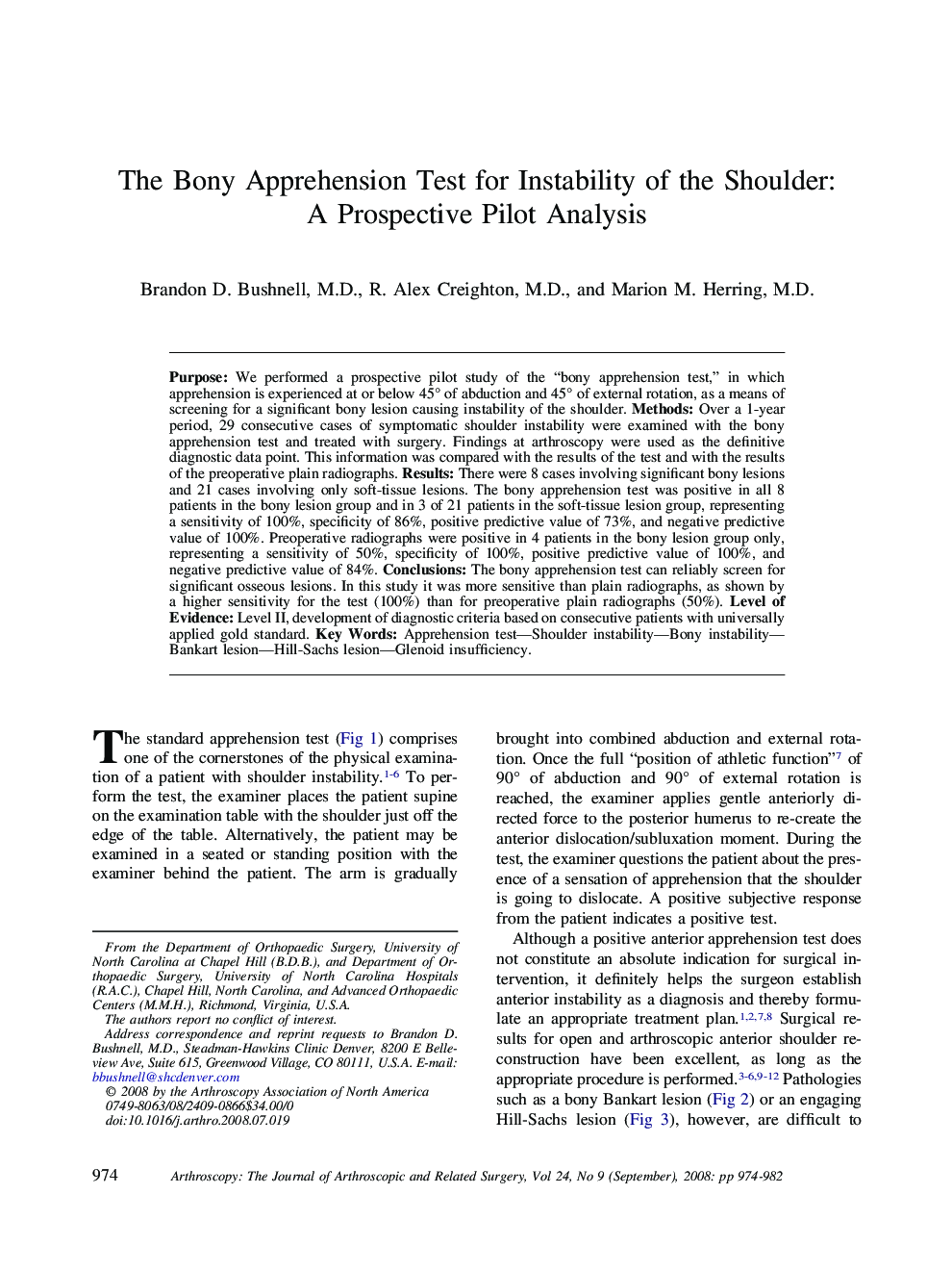| کد مقاله | کد نشریه | سال انتشار | مقاله انگلیسی | نسخه تمام متن |
|---|---|---|---|---|
| 4045900 | 1603580 | 2008 | 9 صفحه PDF | دانلود رایگان |

Purpose: We performed a prospective pilot study of the “bony apprehension test,” in which apprehension is experienced at or below 45° of abduction and 45° of external rotation, as a means of screening for a significant bony lesion causing instability of the shoulder. Methods: Over a 1-year period, 29 consecutive cases of symptomatic shoulder instability were examined with the bony apprehension test and treated with surgery. Findings at arthroscopy were used as the definitive diagnostic data point. This information was compared with the results of the test and with the results of the preoperative plain radiographs. Results: There were 8 cases involving significant bony lesions and 21 cases involving only soft-tissue lesions. The bony apprehension test was positive in all 8 patients in the bony lesion group and in 3 of 21 patients in the soft-tissue lesion group, representing a sensitivity of 100%, specificity of 86%, positive predictive value of 73%, and negative predictive value of 100%. Preoperative radiographs were positive in 4 patients in the bony lesion group only, representing a sensitivity of 50%, specificity of 100%, positive predictive value of 100%, and negative predictive value of 84%. Conclusions: The bony apprehension test can reliably screen for significant osseous lesions. In this study it was more sensitive than plain radiographs, as shown by a higher sensitivity for the test (100%) than for preoperative plain radiographs (50%). Level of Evidence: Level II, development of diagnostic criteria based on consecutive patients with universally applied gold standard.
Journal: Arthroscopy: The Journal of Arthroscopic & Related Surgery - Volume 24, Issue 9, September 2008, Pages 974–982